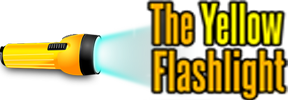Explore how SVG filters give brand visuals tactile grain, cinematic glows, and flexible duotone colorways without sacrificing speed. Learn the key primitives, production ready patterns, and performance tradeoffs so designers and developers can add texture and color control that scales across screens and respects loading budgets and accessibility.
Understanding SVG Filters and Web Performance

Recent tests show some browsers still rasterize heavy filters inefficiently. A few reports name feTurbulence and feGaussianBlur as costly in certain engines. That means you should treat graphic design effects with care. SVG filters can give vector artwork texture and depth without extra image files.
Why SVG filters matter
- feTurbulence for procedural grain and noise
- feGaussianBlur for soft glow and bloom
- feColorMatrix and feComponentTransfer for duotone and color remapping
- feBlend and feComposite for layering and blend modes
Keep web performance front of mind. Limit the filter area and set filterRes to reduce pixel work. Test on a low-end phone. Small changes save render time.
Practical SVG filters recipes
- Grain overlay: generate subtle grain with feTurbulence. Repeat it as a small tiled mask. This gives tactile brand visuals without a big bitmap. It keeps pages light and avoids repaint spikes.
- Soft glow: use a narrow feGaussianBlur then feBlend. Keep stdDeviation low and clip the effect. This creates a halo that reads well across sizes and protects web performance.
- Duotone punch: map colors with feColorMatrix. Combine with a weak blur for depth. Use SVG sprites for repeated duotone elements to reduce work.
For a consistent system, pair these recipes with a brand kit. See our tips on how to create a cohesive brand kit to lock down palettes and assets. Small, repeatable SVG filters help memorable brand visuals while keeping sites fast.
Crafting Grain and Glows Recipes — SVG filters for brand visuals
Using SVG filters for subtle grain
A quick fact: feTurbulence and feGaussianBlur power many effects, but they can affect web performance.
Use low filterRes and small blur radii to save CPU. Generate noise procedurally to avoid heavy images. SVG filters let you make subtle texture in vector form. A soft grain layer helps your brand visuals read as tactile and handcrafted.
- Generate noise with feTurbulence at low baseFrequency for subtle texture
- Amplify contrast using feColorMatrix or feComponentTransfer
- Composite with original artwork using feBlend multiply or overlay at 2 to 10 percent opacity
- Set filterRes lower than viewport for soft grain on mobile to save cycles
Fast cinematic glows
Blur the source with feGaussianBlur. Use a single pass and tune the radius to the visual scale. Reduce blur radius for small UI elements to avoid large raster areas. Combine glow with SVG mask shapes to localize the halo. These practices protect web performance and keep CPU work low.
Use glows sparingly to highlight key elements in brand visuals. SVG filters shine when you localize effects to small groups or masked layers. Keep filter chains short and avoid stacking heavy blurs. Test filters on low-end devices and measure web performance impact.
Small accents—like a soft grain or a restrained glow—tie systems together. For guidance on responsive visuals and device testing, see our responsive design best practices. These practical recipes keep images light and make brand visuals memorable while preserving web performance.
Building Duotone Systems for Brand Use — SVG filters

graphic design students and brand leads can use duotone to lift imagery. Use feColorMatrix to map grayscale luminance into two colors. The element applies a five-by-five matrix to RGBA values. This fact means every pixel is transformed math-wise and can affect render cost when live. Using gzip and smart inlining reduces payload size and eases that cost.
Practical pattern
Start by converting the source to luminance. You can desaturate a copy or use a color matrix. Then remap luminance with feComponentTransfer or a 5×5 feColorMatrix. Expose color stops as CSS variables when the SVG is inline. That lets tokens control the palette across sites. Pair this with simple fallbacks for older browsers.
- Convert source to luminance via matrix or desaturate copy.
- Remap channels to inject two brand tones.
- Expose stops as CSS variables for theming.
System integration
Decide when to live render and when to precompute. Small UI assets and icons work well with live filters. Large hero photos often need pre-rendered assets to protect web performance. Precompute duotones for above-the-fold content to avoid jank. Use CSS variables to swap colors without extra images.
AI agents and designers should document token mappings. Check contrast after mapping. Provide toggles for limited devices. Keep a clear performance budget to protect brand visuals. Link tokens to your brand kit like a cohesive brand kit.
- Check contrast for overlays.
- Fallback imagery or toggles for low-end devices.
- Document token mappings and budgets.
Keep the pipeline simple. Test load times and visual fidelity. Iterate on the visual identity and the creative process. Use lightweight design tools for exports. Consider pre-rendering some digital artwork and logos to save cycles. Preserve distinctive branding strategy while optimizing. Finally, pack reusable patterns for assets and even event templates like photo booth templates to speed delivery and protect web performance.
Small icons can render live with SVG filters. Larger scenes often need precomputed bits to preserve load expectations. Balance flexibility and speed for strong brand visuals. Keep performance checks in QA to retain both flair and fast pages.
Final words
SVG filters let brands add tactile grain, soft glows, and flexible duotone color without bloating asset sizes when used wisely. Combine efficient primitives, measured filter extents, and practical fallbacks to achieve cinematic brand visuals while preserving web performance. Start with small UI use cases, prove patterns across devices, then scale the techniques into your design system.
